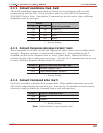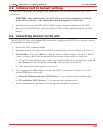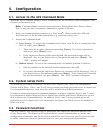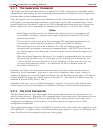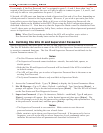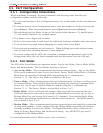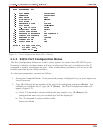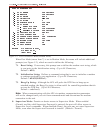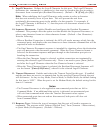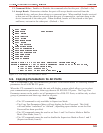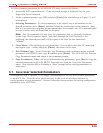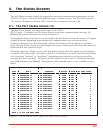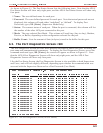
The Port Configuration menu offers the following options:
1. Port Name: (Up to 16 characters) Assigns a name to the port. (Default = undefined).
2. Password: (Up to 16 chars.) Defines the Port Password for this port. Note that identical
Port Passwords are generally assigned to several ports. When this password is entered at
the login prompt, the user will then have access to all ports that share this password.
(Default = undefined).
Notes:
•
The Port Password is not displayed by the Port Parameters menu. When the Port
Password has been defined, the field for this item will read “defined”. To display
Port Passwords, invoke the /SP or /WP commands as described in Section 6.
•
The APS will not allow you to define a Port Password which is the same as the
existing Supervisor Password.
3. Baud Rate: Selects the baud rate for the port. Can be set to any standard rate from 300
bps to 115.2K bps. (Default = Selected By SetUp Switches 1, 2, and 3)
4. Bits/Parity: (Default = 8-None).
5. Stop Bits: (Default = 1).
6. Handshake Mode: Selects the handshake format for this port; XON/XOFF, RTS/CTS
(hardware), Both, or None. (Default = RTS/CTS).
7. Port Mode: Defines the operation mode for this port. Note that Ports 1 and 2 cannot be
configured for Passive Mode or Buffer Mode. (Default = Any-to-Any Mode).
When Any-to-Any, Passive, or Buffer Mode is selected, the unit will display the DTR
Output prompt as shown in Figure 5.1. The DTR Output prompt is not displayed when
Modem Mode is selected.
74. DTR Output: Determines how DTR will react when this port disconnects. DTR
can be held low, held high, or pulsed for 0.5 seconds and then held high. In the
default state, DTR will pulse for 0.5 seconds and then remain high. For more
information on hardware lines, please refer to Appendix A. (Default = Pulse).
5-6



